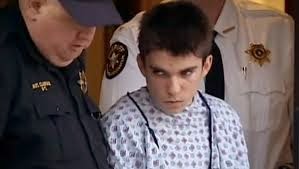The Good Death
“There is no good death, I now know,” writes Ann Neumann at the end of The Good Death: An Exploration of Dying In America (Beacon Press, 2016). “It always hurts, both the dying and the left behind.” What comes before this apt and powerful conclusion is a personal and ethical pursuit of the truth on the part of Neumann inspired by the slow decline and death of her father. Her exploration of the truth about end of life issues is not pretty even as it is also wise and eloquent, a contradiction—a good death with all the sights, smells, and fearful symmetry of how we end. This is the one constant in human existence: death comes, no matter how much science and medicine work to stave off the inevitable. Death comes. So we ask ourselves: are we ready for the inevitable?
“Grief, I learned, is a journey,” she writes in the midst of witnessing her own father’s end. “The work of mourning is easier to explain than the emotion of it.” Her father’s ghostly figure bookends her research in a profound and moving way, forcing her through to the wisdom of experience. This is not an academic study, although it could be that. It is not a personal essay, although those elements are in place on these pages. It is a quest, an effort to understand what we can barely comprehend: the end of us.
Early on in the book, Neumann focuses on hospice care and the right to die movement. She traces the history of end of life definitions: long ago, it was the cessation of heart beat and breathing that spelled the end; now, it is primarily focused on the silencing of brain function, a flat line not on the heart monitor but on the electroencephalogram. Hospice care originated with a British nurse by the name of Cicely Saunders in 1967. An American nurse named Florence Wald followed her example and opened a U.S. hospice in Connecticut in 1974. This type of care ushered in a new era in medicine, one where the patient was made comfortable on his way to the other side rather than being subjected to procedures and interventions that had little measurable success and came with a lot of pain and distress. Neumann, herself, volunteers as a hospice worker to see firsthand what the process entails and how it impacts both the caregiver and the patient. Those stories are some of the most moving pages in the book.
The questions raised by her research are troubling. Are we prepared for the indignity of dying? Her patients must make peace with the loss of privacy, the loss of independence, as well as the fact that they will die sooner rather than later, as hospice care is formulated for the short term. Approximately 1.5 million people die in hospice each year. A patient and her family must determine, in consultation with the health care team, if the situation is terminal and if further procedures would be futile. Along with that, patients must face their fear of death. “Not just the physical pain of death,” she writes, “but of everything surrounding it, too, like abandonment of loved ones, the loss of physical control, the end of the world as we know it.”
This issue of hospice care, the right to die, the facing of our own mortality, continues to dog us as the baby-boomers age. In 2009, Neumann writes, there were 39.6 million people in the U.S, 65 and older; that number will jump to 72.1 million by 2030. The cost is also a factor: Americans spent $2.6 trillion on medical care in the year 2010, which is 17 percent of our gross domestic product. Health care is expensive. Dying is expensive. Funerals are also expensive, as Neumann notes when citing Jessica Mitford’s book, The American Way of Death, the expose of the funeral industry in this country first published in 1963.
Neumann specifically goes after the Catholic Church in the book as a roadblock to a patient’s right to die and end of life care. She brings Thomas Aquinas into the discussion with the principle of “double effect,” where an act may have two different effects, one intended and the other not. Aquinas argues that it is not the outcome we should pay attention to but the intention. The means determines the end, so to speak. In the area of terminal illness, a doctor might offer a patient medication for pain, even to the point where that patient may die from an overdose. However, the intention of the physician must be to mitigate the suffering, not to help the patient commit suicide. Neumann tells us that this double effect is questionable since the physician should know that increasing the dose of pain medication or sedative could lead to the patient’s death.
The Church, though, has a history of preserving life at all costs, and since Catholic hospitals and clinics are ubiquitous in the country, one must consider the consequences of receiving treatment at one of those institutions. Neumann writes that Catholic health care providers “prohibit their staff and doctors from discussing medical treatments like abortion and aid in dying.” People can be force-fed through stomach tubes if they choose to stop eating and drinking in an attempt to end their lives. This intervention occurs even when the person has a clearly-worded advanced directive prohibiting such measures. Neumann tells us that only two institutions can and will force-feed patients entrusted to their care: the Catholic Church and the American prison system.
She devotes considerable space in the book to a discussion of the Terry Schiavo case. It is an enlightening and thorough account that perfectly illustrates the battle between patients and those who speak for them versus institutions and courts of law. In today’s world of medicine, many treatments and interventions are possible. Doctors can keep people alive even when they are technically brain dead, but is this ethical? Neumann discusses other cases similar to the Schiavo case, such as the plight of Jahi McMath and her family. McMath was a young girl who underwent a tonsillectomy but was left brain dead after a hemorrhage during surgery. Her parents fought the declaration of her death to keep her on life support even after the doctors issued a death certificate for the child. She remains physically alive today with greatly diminished brain function in a persistent vegetative state.
Neumann also devotes ample time to a discussion of the death penalty in America, and the controversy over the way a convict is executed. She interviews several prisoners, some of whom are suffering terminal diseases. Is the execution of a convicted killer ethical? What is the future of public executions when many of the drugs used to kill the convict are no longer available either because they are not made in America or the countries where they are manufactured refuse to sell them to U.S. prisons? And what of the terminally ill inmate who simply wants to die and attempts to end his life by stopping all food and drink? Does the prison administration have the right to force feed him?
The narrative of how we die and how we face our end is an important story to write, and Ann Neumann does an excellent job here of bringing us into the discussion and leaving us much to think about once we finish. However, “Books, words, the act of writing can aim to capture detail—the true story—but they will always fail,” she tells us. “History is always inexact, incomplete.” Ultimately, as she walks through her dead father’s empty house at the conclusion of the book, she circles back to the only thing she knows to be true: death comes for us all. It is final. “There is no good death,” she says. “That is what I told myself as I wandered my father’s quiet house the first days and weeks after he died.”
She does offer one glimmer of hope: “But there is a good enough death. It is possible to look it in the face, to know how it will come, to accepts its inevitability. Knowing death makes facing it bearable.” That is the consolation we carry with us until we, ourselves, come to our end and it is time to let go.




Comments
Post a Comment